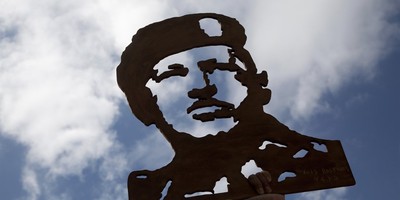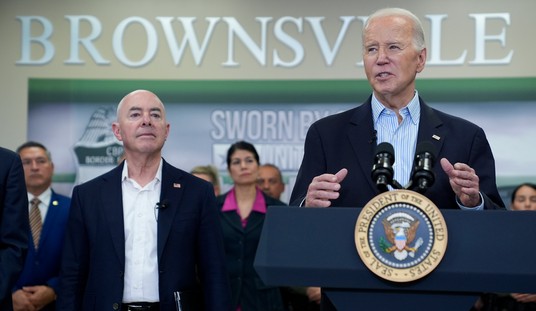I won’t name him because it’s what he wanted. Earlier this year, the deranged 26-year-old gunman who snuffed out the lives of nine innocent human beings before taking his own life on the campus of Umpqua Community College provided some real insight into the minds of the young men involved in what is a disturbing — and growing — trend in America: mass-shooter suicides.
And that’s what these are, these mass shootings. They are suicides that would not be big national stories without a body count that included innocents killed in movie theaters, churches, schools. And, to judge from the shooter’s words, they are mass shootings that might not have happened at all had there been no prospect of mass-media coverage.
But don’t believe me. Here is what the shooter had to say about another deranged gunman, the gunman who took the lives of two journalists in Roanoke, Va., this past August before taking his own.
“On an interesting note, I have noticed that so many people like him are all alone and unknown, yet when they spill a little blood, the whole world knows who they are,” the soon-to-be-infamous gunman from Oregon posted on a popular website.
He wasn’t finished: “A man who was known by no one, is now known by everyone. His face splashed across every screen, his name across the lips of every person on the planet, all in the course of one day. Seems the more people you kill, the more you’re in the limelight.”
His post has since been removed from the site, but his words linger. These deranged young men are staging their own snuff films, taking innocents along with them with the mass media playing the role of co-producer.
The media are co-conspirators in these mass murders whether they like it or not, delivering attention that these deranged men long for — and bank on.
But don’t hold your breath waiting for the media to examine their own complicity. They prefer to spend endless hours blaming the Second Amendment and the National Rifle Association, running endless segments about responsible gun ownership and gun control. But there is little talk about the First Amendment, responsible media ownership, and media self-control.
Recommended
The media are not particularly well regarded these days. Public trust of media institutions is at a historic low. Millennials, according to a recent study, rank the media as more untrustworthy than Congress.
And there are lots of reasons why. Take Ferguson. With little in the way of a factual record, and little in the way of evidence, the media descended on the small town in Missouri. A local incident, not yet resolved, had become an international story, and why? Because the media decided it was symptomatic of a larger narrative about police and the lives of African Americans.
At some point during the unrest on the streets of Ferguson, journalists on the streets seemed to outnumber the protesters. When the fires erupted and chaos ensued, many in the media seemed excited about it, as if they were rooting for a city to burn. Ironically, the presence of the mass media just might have been the reason a city nearly burned.
One thing is certain: A city aflame is a great story. And gets great ratings.
The protests eventually died down, and the reporters who descended on the St. Louis suburb in the name of helping the people there were off to chase the next sensational story in some other American town. The people of Ferguson were left to clean up the mess the media made — a mess from which it will take years to recover.
One of the emerging heroes in the Oregon mass shooting, Sheriff John Hanlin, knows all too well the role the media play in so many news events. He refused to give the media what it hoped for.
‘I will not give him the credit he probably sought with this horrific and cowardly act,’ Hanlin told the press about the killer they were covering. “I will not give him the credit he probably sought with this horrific and cowardly act,” Hanlin told the press about the killer they were covering. “You will never hear me mention his name.” The sheriff’s statement reflects the overwhelming sentiment of the people in that small town in Oregon, and of the American people. It’s the names of the victims we should know, all nine of them.
Lucero Alcaraz, 19, of Roseburg, whose sister posted on Facebook that she won scholarships to cover her college costs; Quinn Glen Cooper, 18, of Roseburg, whose family said he loved dancing and voice acting; Kim Saltmarsh Dietz, 59, an outdoors enthusiast who was taking classes at the same time as her daughter; Lucas Eibel, 18, of Roseburg, who was studying chemistry and loved volunteering with animals; Jason Johnson, 33, whose mother told NBC News that he successfully battled drug abuse and was in his first week of college; Lawrence Levine, 67, of Glide, an assistant professor of English at the college; Sarena Dawn Moore, 44, of Myrtle Creek; Treven Taylor Anspach, 20, of Sutherlin; and Rebecka Ann Carnes, 18, of Myrtle Creek.
NoNotoriety.com is a website dedicated to not giving these mass killers the attention they seek. The site, created after the mass shooting in Aurora, Colo., in 2012, expressed the wishes of so many of the victim’s families with this mission statement:
The quest for notoriety and infamy is a well-known motivating factor in mass killings and violent copycat crimes. In an effort to reduce future tragedies, we challenge the media — calling for responsible media coverage for the sake of public safety when reporting on individuals who commit or attempt acts of rampage mass violence thereby depriving violent like-minded individuals the media celebrity and media spotlight they so crave.
This is not some obscure theory, the idea that the media are playing a part in these mass-shooter suicides. Back in 1987, four teenagers in the small town of Bergenfield, N.J., made a suicide pact. They entered a car in a garage, started the engine, and died minutes later of carbon monoxide poisoning. Two more young people in the town attempted suicide the next week. The national media descended on that town in full force.
I remember it because my dad was the superintendent of schools of Bergenfield at the time, and the media’s appetite for gruesome details seemed insatiable. Within weeks, there erupted a rash of suicides nationwide that resembled those suicides in Bergenfield, leading the New York Times to run a front-page headline that put media coverage itself in the crosshairs: “Pattern of Death: Copycat Suicides among Youths.”
”Hearing about a suicide moves those teen-agers at risk closer to doing it themselves,”’ David Shaffer, then head of the Suicide Research Unit at the New York State Psychiatric Institute, told the Times. “The news coverage of teen-age suicides can portray the victims as martyrs of sorts, and the more sentimentalized it is, the more legitimate — even heroic — it may seem to some teen-agers.”
This tendency of disturbed young people to imitate each other’s highly publicized suicides has a name, the ‘Werther Syndrome.’ This tendency of disturbed young people to imitate each other’s highly publicized suicides has a name, the “Werther Syndrome,” a reference to the hero of Goethe’s novel The Sorrows of Young Werther. In the novel, Werther kills himself to resolve what he saw as a hopeless love triangle. The book was banned in some European countries because of a rash of suicides by young men who’d read it.
”Teen-agers are highly imitative, influenced by fads and fashions in general,” David Phillips, a sociologist at the University of California at San Diego, told the Times. In a series of studies, Phillips found a significant rise in suicides after a well-publicized case. The rise was greatest among teenagers. “Hearing about a suicide seems to make those who are vulnerable feel they have permission to do it,” Phillips said.
The increase of suicides, and the increase in media coverage of them, led to “Suicide Contagion and the Reporting of Suicide” (1994), a study published by the Centers for Disease. According to the authors, “evidence suggests that the effect of contagion is not confined to suicides occurring in discrete geographic areas. In particular, nonfictional newspaper and television coverage of suicide has been associated with a statistically significant excess of suicides.” Media coverage of suicides, the CDC concluded, is a cause of suicides. Add nearly 30 years and imagine the overlay of social media and 24/7 cable-news outlets. Then add a dab of mass murder to suicide. You get the point. Coverage of mass-shooter suicides is a cause of mass-shooter suicides.
The CDC report wasn’t finished. The panel believed that suicide contagion was increased by three tendencies of the news media:
1. Presenting simplistic explanations for suicide. Suicide is never the result of a single factor or event but rather results from a complex interaction of many factors and usually involves a history of psychosocial problems. . . .
2. Engaging in repetitive, ongoing, or excessive reporting of suicide in the news. It turns out that repetitive and ongoing coverage, or prominent coverage, of a suicide tends to promote and maintain a preoccupation with suicide among at-risk persons, especially among persons 15–24 years of age. This preoccupation appears to be associated with suicide contagion. . . .
3. Providing sensational coverage of suicide. By its nature, news coverage of a suicidal event tends to heighten the general public’s preoccupation with suicide. This reaction is also believed to be associated with contagion and the development of suicide clusters. News media professionals should attempt to decrease the prominence of the news report and avoid the use of dramatic photographs related to the suicide.
The CDC’s report was not widely reported — shock of shocks — and the media continue to be guilty on all three of the above counts as they relate to the contagion of mass-shooter suicides.
Americans across the country are with the CDC’s report, with NoNotoriety.com, and with Sheriff Hanlin. And they are sick and tired of the endless media sensationalism that drives more deranged young men to follow in their warped heroess footsteps.
Last year’s sleeper movie of the year was Nightcrawler. It starred Jake Gyllenhaal as a hired gun for TV stations, and his peculiar specialty was getting to the scene of an accident before his competitors, and getting up-close footage of people dying, or already dead, which he would then sell to a local news station.
By movie’s end, Gyllenhaal’s creepy character had gone far beyond finding gory footage. He was soon a participant in the news, going so far as to cause a shootout that may not have happened but for his presence. To many Americans, American journalists are no better than that character — that nightcrawler — that Gyllenhaal so brilliantly depicted.




















Join the conversation as a VIP Member